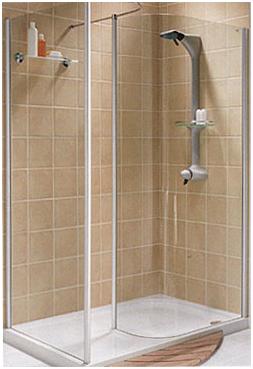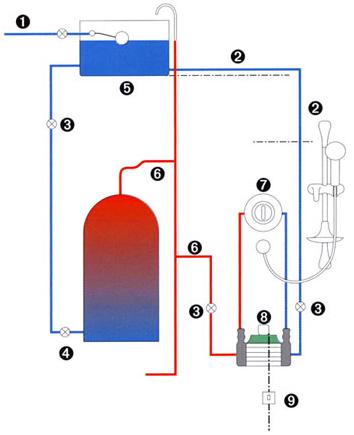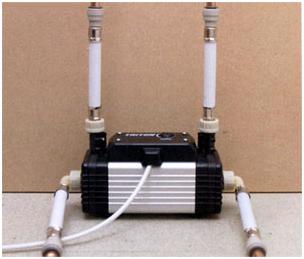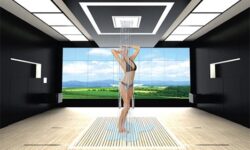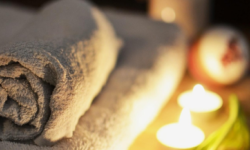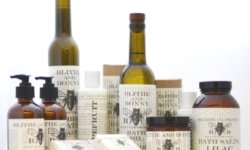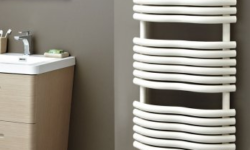In today's fast moving world, especially in the city, a shower is on nearly everyone's shopping list as a must-have in order to remain hygienic while keeping to our tough schedules. A proper, powerful shower is an absolute necessity, although we have to admit that it's not the same as a nice, long, hot bath.
Shower Performance
For a conventional shower fed by an indirect water system to work satisfactorily, the cold water storage tank should be at least 900 mm (3 ft) above the shower head. If your shower performance is poor, you can increase the water pressure by either raising the storage tank or installing a pump.
Manual Shower Mixers
Manual shower mixers are simple to work and relatively easy to install, either over an existing bath, or in a separate shower enclosure. They must be independently supplied with hot and cold water. The single lever controls both the temperature and flow of the water. Ceramic disc mixers operate more smoothly and are less prone to hard-water scaling. Like most mixer showers, manual mixers can be surface mounted (onto the wall face) with chromed pipework showing, or flush-fitted with the pipework and working parts of the mixer concealed within the wall, if it is a stud partition.
Thermostatic Mixers
Thermostatic mixers are basically the same as manual mixers except that they have an in-built safety device to prevent scalding or freezing, if there is a change in the flow rate. Whether it's the cold or the hot water flow rate that drops, the mixer will automatically compensate, by reducing the flow rate on the opposite side. This effectively prevents an accident if somebody turns on a tap elsewhere in the house or flushes the toilet, or if a programmed washing machine, or dishwasher comes on.
TOP TIP - Because of this built-in safety aspect, when fitting a thermostatic valve you need only branch off the existing bathroom supply pipes, but it's more effective to connect the pipes as near to the water tank and hot-water cylinder as possible. Bear in mind that the mixer is unable to boost the pressure or the supply, so if your pressure is low, a booster pump may be required.
The majority of thermostatic mixers can be used with existing gravity-fed hot and cold water supplies, but again you may need to fit a booster pump. Check with your supplier as some showers work well at low pressure while others certainly don't.
Pump Assisted Shower
A pump-assisted shower, or power shower as people commonly like to call it, appears on many a wish list as the ideal shower system. Power shower does have a nice ring to it, doesn't it?
The pump delivers the water at a consistent flow rate and pressure, eliminating the minimum 900 mm (3 ft) water storage requirement (that is above the shower head) for a gravity-fed shower. A head, or height, of only 75-225 mm (3-9in) is required to start the pump when it is switched on. A pump can be used to increase the pressure of stored hot and cold water, not mains-fed water. The best way is to connect the cold supply directly to the cold-water storage tank, not a branch from the bathroom supplies, and the hot supply should be connected directly to the cylinder via a Surrey or Essex flange, which prevents the pump from sucking air in from the vent pipe. If the hot water is heated by an immersion heater (see diagram), ensure the cylinder is supplied by a direct cold feed, and the gate valve is fully open. This prevents the cylinder from running dry, and burning out your heating element. Alternatively, if the cylinder is heated via the boiler, ensure a thermostat is fitted to prevent the water from getting too hot, making the shower splutter. Power showers often have an integral electric pump in the mixer cabinet, which is fitted within the cubicle. Other pumps are made for isolated installation, with hot and cold pipes going first to the pump, then onto the shower mixer. These pumps can often be added to an existing installation to improve a poorly performing shower.
The best position for these pumps, if possible, is next to the hot-water cylinder, normally in the airing cupboard. As these pumps are not silent, you may want to insulate the cupboard for noise. When installing the pump, remember to install it at the bottom or below the cylinder to ensure it always remains full of water. If this isn't practical, there are pumps specifically designed to operate above the cylinder at high level, even in the loft. Check with your supplier to confirm what you require.
Installation for a Power Shower
- Cold water mains supply
- Cold water supply
- Gate shower valves
- Drain shower valve
- Cold-water storage tank
- Hot water supply
- Thermostatic shower valve
- Shower Pump
- Isolating switch
 (0)Dislikes
(0)Dislikes (0)
(0)
